
Data Collected

ShovelSense uses a set of robust high-speed X-ray fluorescence (HSXRF) sensors installed on mobile mining machinery.

Data Integration
-
Digital transformation and operational efficiencies are dependant on the automated sharing of data throughout the mine IT “ecosystem”
-
ShovelSense data can be a key input into several downstream systems or processes, and properly defined, implemented and maintained data interfaces are very valuable
-
Automated integration with Fleet Management Systems removes operator distraction and error, and prepares mines for the adoption of autonomous hauling units
ShovelSense scans the mineral content of the scoop to assess the grade of the material within. Operators are notified in real-time to redirect loads to the mill or the waste heap.
Our primary data source is the XRF Sensor data we collect that helps us classify the material as ore or waste, or enables us to identify other elements of interest. Using this data, we can determine the apparent grade of base metals contained in the materials, or detect deleteriously or penalty elements that may negatively impact downstream processing.
Valuable data collected by ShovelSense can also be used to map orebodies at much higher resolution, increasing recovery, life-of-mine and driving continuous improvement in efficiency, productivity and sustainability.
Our primary data source is the XRF Sensor data we collect that helps us classify the material as ore or waste, or enables us to identify other elements of interest. Using this data, we can determine the apparent grade of base metals contained in the materials, or detect deleteriously or penalty elements that may negatively impact downstream processing. We are also developing sensors that will enable us to determine particle size and mineral speciation, which for example, will help us distinguish between oxides and sulfides.
Benefits (This list will likely change)
- Profit improvement and increased ore recovery through ore control optimization and reduced waste processing
- Optimizes mill recovery
- Recovers ore from the waste
- Removes waste from ore
- Eliminates the need for costly sampling and blast movement monitoring
- Precise measurement of heterogeneity at the extraction face
- Improve operations and sustainability performance that lower operating costs
- Lower ore hardness as waste ore is rejected
- Lower energy, water, and reagent consumption/tonne of metal produced
- Lower CO2 emission/tonne of metal produced
- Extend Life of Mine
Our sensors are precision instruments that operate in an extremely harsh environment. Given the operational impact of the data produced, it is important to ensure the sensors are performing optimally and to have early notice of potential component failures to schedule preventative maintenance.
To ensure sensors are performing optimally, our solution includes a number of instrumentation-type sensors that collect data related to temperature, vibration, power, current, voltage, and connectivity, which are used by machine learning-based algorithms for anomaly detection and automated alerts. This information is monitored 7X24 by MineSense and is used for optimization interventions, or to make replace/repair recommendations.
Benefits:
- Real-time diagnostic data helps ensure higher equipment availability by enabling immediate intervention when required.
- Analysis of detailed diagnostic, performance and equipment utilization data points enables continuous, real-time system optimization and proactive maintenance scheduling.
- Near-real-time data quality analysis ensures ShovelSense is performing optimally through changing environmental and operating conditions.
Digger operating and production metrics are key for successfully implementing continuous improvement and operational efficiency programs. Comparisons of metrics across machines, operators and/or locations can uncover areas where performance can be improved.
As part of normal system operations MineSense is also able to collect data on machine operations, including bucket dig position, bucket fill factor, dig angles, digging velocity, and the number of buckets passes required to fill a truck. This data can be used to determine material “diggability”, as well operator effectiveness, and can provide insights on where additional operator training may be required or where equipment may be ill suited for a particular use case.
Benefits:
- Understand operator effectiveness/technique and highlight areas where improved training can boost productivity
- Benchmark operator digging patterns against best in class and suggest changes to optimise digging performance



